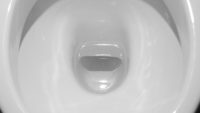According to the U.N., we are in the midst of a longevity revolution. More than 700 million people in the world are over the age of 65. I hate to admit it, but my wife and I are both in this category. The U.N. report on aging population is fascinating, explaining all the implications to society and the economy.
The Building Code has also looked at the aging population and the impact it has on plumbing fixtures. When the 2021 ICC International Building Code gets adopted, there will be new optional requirements to address assisted use plumbing fixtures. We typically think of assisted use being in a nursing home; however, it can be other facilities used by the elderly.
Assisted use versus accessible fixtures
Assisted use plumbing fixtures expand on accessible plumbing fixtures, also called handicapped plumbing fixtures. However, there are distinct differences between assisted use and accessible fixtures.
Some of the original accessible fixture requirements date back to veterans returning from the Vietnam War as paraplegics. They were vocal, as they should have been, demanding access to all building facilities. The location of fixtures and grab bars were all based on studies of these paraplegics. The majority of the paraplegics studied still had very good upper body strength. It was relatively easy for them to use grab bars to maneuver onto a water closet.
As the accessible fixture requirements matured, we saw a change in both the design and location of fixtures. The force required to activate fixtures was also modified.
The next evolution of fixture placement and design is for the aging population. The “assisted use” for mobility comes in many forms. It can be a wheelchair, a walker or a cane. All three devices assist a person in gaining access to a building and the building elements. In certain building applications, a caregiver provides assistance.
New code requirements
Section 1110 of the 2021 ICC International Building Code identifies optional requirements for water closets and roll-in showers. For a water closet, the grab bars are not your side and rear wall grab bars. Rather, the grab bars must swing down on either side of the water closet. The new requirements specify a longer swing down grab bar, with a minimum length of 36 inches. The toilet paper holder must be on the swing down grab bar.
Since the grab bars swing down, there is no minimum or maximum distance to the side wall. However, you could say there is a minimum distance, since the swing down grab bars must be located 14 to 16 inches from the centerline of the water closet. The clear floor space around the water closet must be 66 by 78 inches. This additional space allows a caregiver to assist a user in lowering themself onto the water closet.
For the roll-in shower, the grab bar arrangement is different. Furthermore, a shower seat is never required. For many assisted users, they can stand while showering. However, they need grab bars for balance, and to lift themselves in and lower themselves out of the shower. The roll-in shower also allows the user to take a wheelchair into the shower enclosure. One of the missing components in the new building code is a requirement for a vertical grab bar in the shower. Many elderly rely on a vertical grab bar, as opposed to the horizontal grab bar, for balance. There is an assumption that plumbing engineers and architects will determine the ideal location of a vertical grab bar and simply add it to their design.
There was also a significant change to the IAPMO Uniform Plumbing Code to address bathrooms with roll-in showers. The new requirements in Section 408.5 of 2021 Uniform Plumbing Code requires the entire floor to be considered a wet location where there is no threshold. This makes sense because there are no distinctions in the area of the shower. By including the entire room, a level of safety is provided.
With the addition of assisted use plumbing fixtures in the Building Code, the ICC A117.1 Committee has created three new subgroups to examine plumbing related fixtures in the Accessibility standard. Included in that group is an assisted use committee. This committee is working on expanded text to add to ICC A1171.1 to further regulate these fixtures.
The other two subgroups are for accessible bathing fixtures and adult changing tables. The latter committee is addressing an issue that has long been ignored — adults that have to wear diapers. While baby changing stations have become the norm, there are very limited facilities for adult changing stations.
The adult changing stations address both the elderly and the physically or mentally challenged population. Some of these adult changing stations have lifts for moving the user. Others have a water supply for cleaning. Still others have tables that adjust by raising or lowering.
There are a number of states currently evaluating proposed laws to mandate adult changing stations in certain buildings. The typical buildings selected are: Highway rest stops, schools and airports to name a few. One elected official had an interesting response, which I will paraphrase, “How many people do we have in our state that require these adult changing stations? Why would we implement a law for such a small percentage of the population?”
The real question should be, “Are we violating an individual’s civil rights by not providing an adult changing station when they need one?” That is also what we need to consider in the design of buildings. Should this building have an adult changing station? This is also something we should bring to the client’s attention. Many building owners don’t even know adult changing stations exist.
As we head into our first Covid-19 holiday season, please remember the aged population. Remember the civil rights needs of everyone. While our family gathering may be smaller or non-existent, I hope that you still have a glorious Christmas, wonderful Hanukah and safe and prosperous New Year.
I’m certainly glad that 2020 is coming to an end. Let’s hope 2021 lifts our spirits and brings us to a better level of normalcy.
The views expressed here are strictly those of the author and do not necessarily represent PM Engineer or BNP Media.




